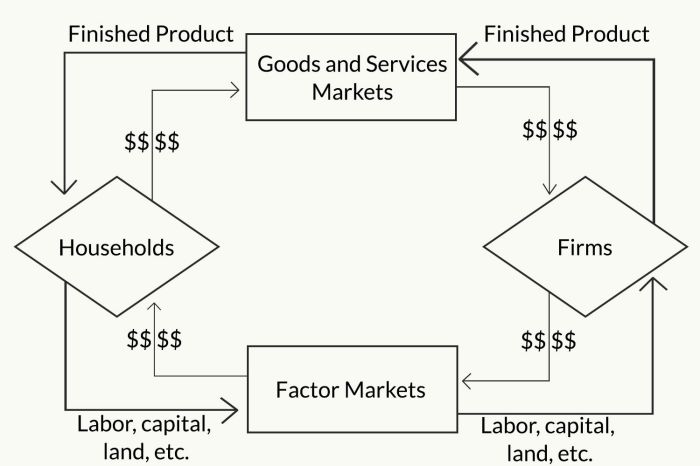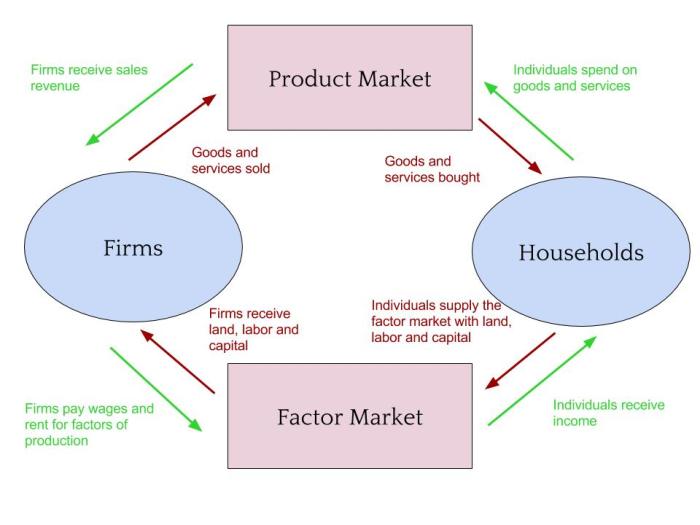Label each component of the circular flow diagram. – Labeling each component of the circular flow diagram is crucial for understanding the intricate interplay between various economic agents and markets. This guide provides a comprehensive overview of the circular flow diagram, identifying and explaining each component’s role in driving economic activity.
The circular flow diagram is a visual representation of the continuous flow of goods, services, and resources within an economy. It consists of four main components: households, firms, markets, and government. Each component plays a distinct role in the production, distribution, and consumption of goods and services.
Introduction

The circular flow diagram is a visual representation of the flow of goods, services, and money within an economy. It is a useful tool for understanding how the economy works and how the different sectors of the economy interact.The circular flow diagram consists of four main components: households, firms, markets, and government.
Households are the consumers of goods and services, and they provide the labor that firms need to produce goods and services. Firms are the producers of goods and services, and they sell these goods and services to households. Markets are the places where households and firms buy and sell goods and services.
Government is responsible for providing public goods and services, such as roads, schools, and healthcare.
Households
Households are the consumers of goods and services in the economy. They provide the labor that firms need to produce goods and services, and they earn income from their labor. Households use their income to buy goods and services from firms.Households
also save a portion of their income. This saving can be used to invest in new businesses or to purchase financial assets, such as stocks and bonds.
Firms
Firms are the producers of goods and services in the economy. They use labor and capital to produce goods and services, and they sell these goods and services to households. Firms earn revenue from the sale of their goods and services, and they use this revenue to pay for their costs, such as labor, capital, and raw materials.Firms
also invest a portion of their revenue in new equipment and technology. This investment can help firms to increase their production capacity and to improve the quality of their goods and services.
Markets
Markets are the places where households and firms buy and sell goods and services. There are many different types of markets, including markets for goods, services, labor, and capital.Markets play an important role in the circular flow diagram. They allow households and firms to exchange goods and services, and they help to determine the prices of goods and services.
Government, Label each component of the circular flow diagram.
Government is responsible for providing public goods and services, such as roads, schools, and healthcare. Government also regulates the economy and provides social safety nets for the poor and unemployed.Government spending is a major part of the circular flow diagram.
Government spending creates jobs and helps to boost economic growth.
FAQ Compilation: Label Each Component Of The Circular Flow Diagram.
What is the purpose of the circular flow diagram?
The circular flow diagram is a simplified representation of the economy that shows the flow of goods, services, and resources between different economic agents.
What are the four main components of the circular flow diagram?
The four main components of the circular flow diagram are households, firms, markets, and government.
What is the role of households in the circular flow diagram?
Households are the primary consumers of goods and services in the economy. They also supply labor and other resources to firms.

